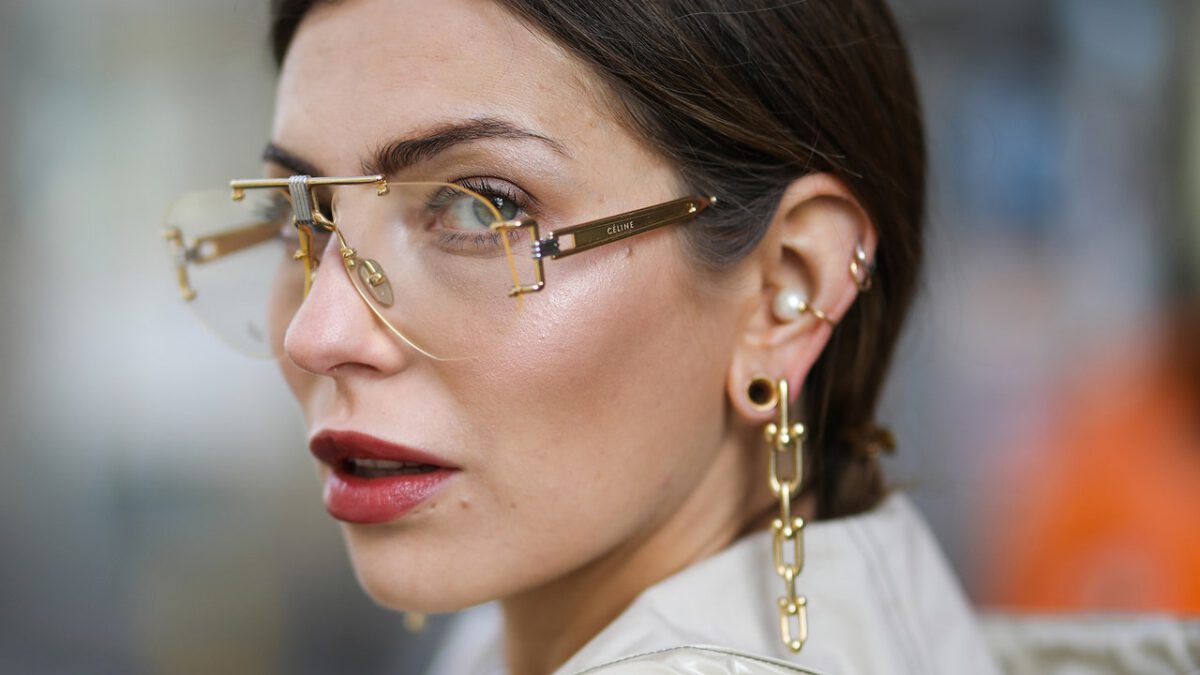You’ve probably seen helix piercings around. Whether it’s a dainty detail or a bold statement, they’re always perched toward the top of the ear, giving you an easy way to switch up your look. Maybe you’ve been thinking about getting a helix piercing to complete your ear-scape. Perhaps this is the first time you’re hearing about it, and you want to know why it’s so hot among celebrities like Lily Allen, Cardi B, and Miley Cyrus. Either way, we’ve got you covered.
Table of Contents
ToggleWhat is a Helix Piercing?
“A helix piercing is any piercing along the upper and outside cartilage ridge of the ear,” says Studs piercer Shannon Freed. The helix describes that particular area of the ear, but there are different placements along that curve. The flat area at the top of the ear, just below the helix, is known as the flat helix. The forward helix is the part of the helix closest to the side of the face, where the ear attaches to the head, directly above the tragus. It’s a small surface area, but dainty studs or hoops fitted there will face forwards.
What is a Double Helix Piercing?
A double helix piercing consists of two closely spaced piercings that require technical precision to ensure perfectly spaced placements, explains Maria Tash piercer Kevin Lamb. It should be done with matching angles that complement each other and the client’s chosen jewelry.
Do Helix Piercings Hurt?
Let’s talk about helix piercing pain. Does it hurt more than a lobe piercing? “Pain tolerance varies, but generally, your helix will hurt more than your lobes as it is less fleshy,” says Freed. Cartilage tissue is denser, which requires more force to pierce through, resulting in slightly more pain. However, the pain is temporary, and your beautiful new piercing is forever.
Bond adds that most people have fairly thin cartilage around their helix, making it one of the less painful cartilage piercings. At Laura Bond, they rate the pain around a 5-6/10.
How Long Does a Helix Piercing Take to Heal?
“Healing is subjective and depends on factors such as your overall health, sleep and stress levels, and your aftercare regimen,” says Freed. Our bodies react to and recover from physical stressors at different rates. However, if you’re looking for an average estimate, Freed suggests at least two months. “The initial healing time for a helix piercing is two to four months. For the piercing to be fully healed, it takes six to nine months. Healing timelines may vary based on your specific piercing and body, but you’ll know your ear is healed once any discharge, swelling, redness, flaking, or soreness stops.”
Frequently Asked Questions
Q: How can I speed up the healing process for a helix piercing?
A: While healing times vary from person to person, there are several steps you can take to promote faster healing. Follow a proper aftercare routine, keep the area clean, avoid touching or twisting the jewelry, and avoid sleeping on the piercing side.
Q: Can I change the jewelry before the piercing is fully healed?
A: It’s best to wait until the piercing is fully healed before changing the jewelry. Changing it too early can disrupt the healing process and increase the risk of infection.
Q: What should I do if my helix piercing gets infected?
A: If you suspect an infection, it’s important to seek medical advice. Avoid removing the jewelry unless instructed by a healthcare professional, as it can trap the infection inside.
Conclusion
A helix piercing is a trendy and stylish way to accessorize your ear. While it may be slightly more painful than a lobe piercing due to denser cartilage, the pain is temporary, and the end result is worth it. Healing times may vary, but with proper aftercare and patience, your helix piercing will eventually fully heal, allowing you to enjoy your new ear adornment. Remember, if you have any concerns or suspect an infection, it’s always best to consult with a healthcare professional.






